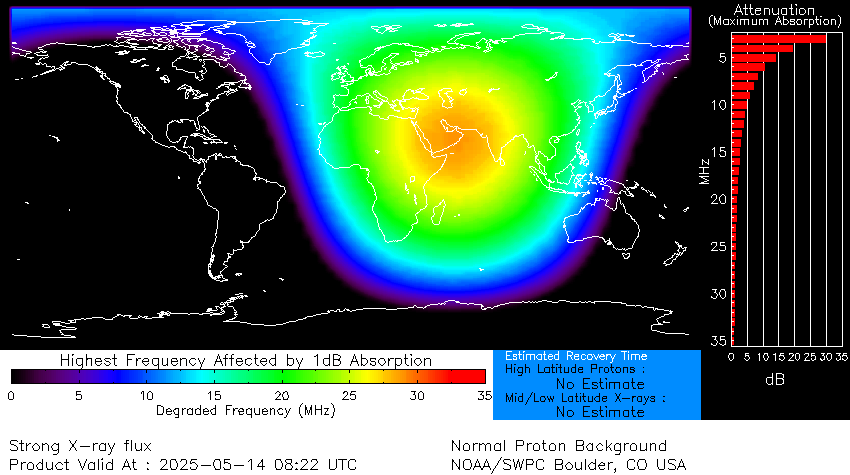Understanding the May 14 Solar Flare Event
Solar Flare: On May 14, 2025, the Sun emitted its most powerful solar flare of the year, classified as an X2.7-class event. Originating from sunspot AR4087, this intense burst of solar radiation caused widespread radio blackouts across Europe, Asia, and the Middle East. The flare’s impact was immediate, disrupting high-frequency communication systems and raising concerns about the resilience of global infrastructure. Scientists at NOAA’s Space Weather Prediction Center labeled the event as an R3-level radio blackout, indicating strong interference with communication systems. This solar activity is part of the ongoing solar maximum phase, which began in 2024 and is expected to continue through this year, increasing the frequency and intensity of solar and geomagnetic storms. The flare’s effects were not limited to the Eastern Hemisphere; its implications for the United States are significant and multifaceted. As the Sun continues its active phase, understanding and preparing for such events becomes increasingly crucial. The recent flare serves as a stark reminder of our vulnerability to space weather phenomena. It underscores the need for robust monitoring and mitigation strategies to protect critical infrastructure.
Table of Contents

Implications for the United States
The implications for the United States are multifaceted, affecting economic stability, global influence, national security, and domestic policy. From an economic perspective, shifts in global dynamics—such as rising powers, energy transitions, and financial disruptions—pose both risks and opportunities. For instance, the U.S. currently holds around 24.3% of global GDP (IMF, 2024), but increasing competition from China and India threatens its dominance. The growing emphasis on clean energy and AI-driven industries is also pressuring the U.S. to accelerate innovation and infrastructure investments to maintain its leadership.

In terms of national security, evolving threats such as cyber warfare, AI-driven espionage, and global terrorism are forcing the U.S. to adapt rapidly. According to the Cybersecurity and Infrastructure Security Agency (CISA), the number of major cyberattacks targeting U.S. critical infrastructure rose by over 35% in 2023 alone, making cybersecurity a cornerstone of U.S. defense planning. Additionally, the rise of geopolitical tensions in the Indo-Pacific, Middle East, and Eastern Europe is requiring the U.S. to stretch its military and diplomatic resources more than at any time since the Cold War.
Politically, the U.S. must contend with the growing influence of autocratic regimes and disinformation campaigns aimed at weakening American democracy. According to the Freedom House 2024 report, global democracy has been in decline for the 18th consecutive year, and adversaries are actively trying to exploit political polarization within the United States. Ensuring robust democratic institutions, election security, and media literacy among citizens is becoming essential to preserve internal stability and global credibility.

Domestically, these international shifts are influencing policy on immigration, education, energy, and public health. The U.S. is experiencing a renewed push to invest in STEM education and workforce retraining to meet future labor demands. With over 11 million job vacancies reported in 2024 (U.S. Bureau of Labor Statistics), the challenge is not a lack of jobs, but a lack of qualified workers. Federal and state governments are under pressure to revamp education systems and incentivize careers in tech, engineering, and healthcare to maintain competitiveness.
Strategically, the U.S. must redefine its global alliances, trade agreements, and diplomatic strategies to safeguard its long-term interests. The decline of multilateralism and the rise of regional blocs—such as BRICS and ASEAN—mean the U.S. needs to adopt a more agile and inclusive foreign policy. For example, in 2023, over 50% of global trade growth came from Asia, emphasizing the importance of deepening U.S. partnerships in the Pacific region. Maintaining a strong yet adaptive global presence is crucial for the U.S. to uphold its influence in a rapidly changing world.
[USnewsSphere.com / swpc]





